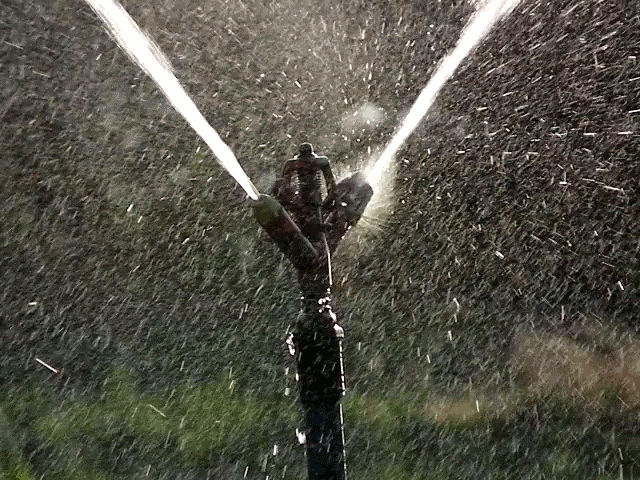IAEA and FAO support farmers in Namibia with combined nuclear and water-saving techniques
Gaeseb’s farm used to rely on a diesel water pump, but the high cost limited his agricultural output.

Namibia is one of the driest countries in Africa. It is home to the world’s oldest desert, the Namib, as well as the Kalahari Desert, whose name derives from the Tswana word for “great thirst”. Approximately 92 per cent of the country is defined as very arid, arid or semi-arid, and its rainfalls are rare and erratic. In the last decade, Namibia’s government declared national emergencies three times due to severe droughts that caused substantial harm to the country’s agriculture and economy. The most recent drought in 2019 – the worst for the country in 90 years – saw agricultural production hit an all-time low, leading to serious food shortages.
With support from the IAEA and the Food and Agriculture Organization of the United Nations (FAO), farmers in the northern regions of Kavango East, Kavango West, Omusati, Oshikoto and Tsumeb are now using a combination of nuclear techniques and a water-saving irrigation technology, known as small-scale drip irrigation, for watering their fields. Based on cosmic ray neutron sensors, which provide real-time data on soil moisture, it has allowed farmers to deliver small but precise amounts of water directly to the plants. Drip irrigation, which is made possible with the help of nuclear and isotopic techniques that can measure moisture levels in both the soil and the plants, enables farmers to work out exactly how much water and nutrients to use and when. It allows water to be fed to the plants through a network of pipes or narrow tubes that deliver water directly to either the base or the root. The process helps to reduce water use.
Implemented as part of an IAEA technical cooperation project, which started in 2020, this drip irrigation system has helped increase irrigation water use efficiency by over 80 per cent compared to rainfed agriculture, and has improved yields by up to 70 per cent in the farmers' fields that were part of the project.
Most smallholder farmers in Namibia rely solely on rainfall for crop production. However, scarce and unpredictable rains, as well as poor soil fertility, mean yields of the country’s staple food crops remain low. At any stage of plant growth — be it after sowing or during flowering — drought adversely affects its development, resulting in low productivity and weak harvest.
“The installation of the small-scale drip irrigation system with the help of the irrigation information – when and how much to apply – has helped to increase the production of crops in my farm from a one-time to almost all-year-round,” said Moses Gaeseb, a farmer from the north-eastern town of Tsumeb who had the drip irrigation equipment installed in September 2020. On his farm, Gaeseb cultivates maize, tomatoes, green peppers and watermelons.
Gaeseb’s farm used to rely on a diesel water pump, but the high cost limited his agricultural output. He and other farmers participated in demonstration trials coordinated by the IAEA and FAO. They received small-scale, solar-powered drip irrigation equipment capable of filling a 10,000-litre water tank within an hour. Gaeseb explained that his production has quadrupled thanks to this technology.
Andreas Naoseb, a farmer from Oshikoto who also took part in the project, said that before the drip irrigation system “our 10-hectare land had been lying idle without being utilized for crop or animal production.” He explained that the new irrigation equipment has breathed new life into the farm, uniting the family around the business and providing income throughout the year.Growing more, watering lessThe IAEA and FAO are working with scientists in Namibia to advance the application of drip irrigation to protect crops amid severe droughts.
“Drip irrigation provides the minimum amount of water needed for crops to flourish and thrive, to mitigate the effects of unprecedented droughts at any crop growth stages, helping local farmers substantially increase yields with less water and prevent water loss due to evaporation,” said Joseph Adu-Gyamfi, Integrated Soil Fertility Management Specialist at the Joint FAO/IAEA Centre of Nuclear Techniques in Food and Agriculture.
Namibia’s government is developing programmes to enhance food security and strengthen food production. The plan includes increasing yields of major crops, such as maize, sorghum and cowpea by 25 to 50 per cent. As part of these efforts, the government is exploring the possibility of introducing more small-scale drip irrigation systems to increase the efficiency of agricultural output, protect water resources and expand the cultivation of other high-value crops, such as onions, tomatoes, cabbages and groundnuts, including off-season.
“Low crop yields are a serious problem in water-stressed Namibia, especially against the backdrop of increasing climate change,” said Anna Grigoryan, Programme Management Officer at the IAEA Department of Technical Cooperation. “We are committed to working with our Namibian partners to jointly find solutions to droughts and increase agricultural productivity through nuclear science and technology.”










